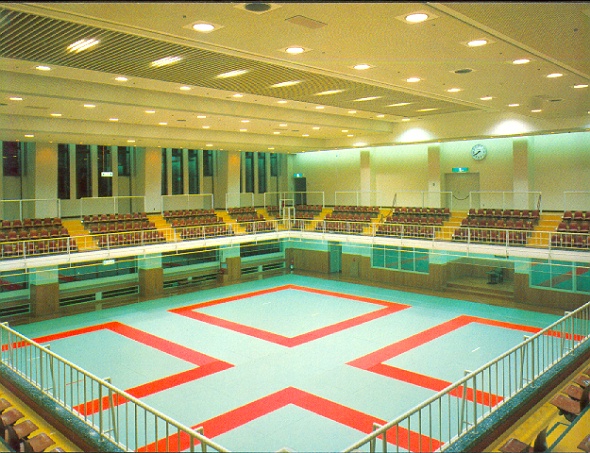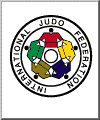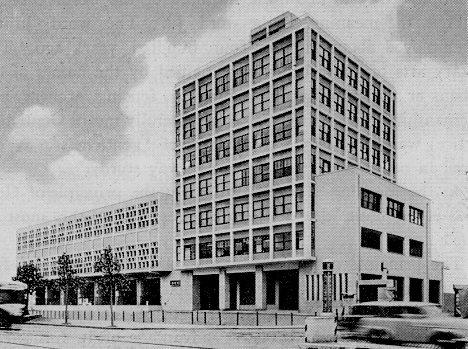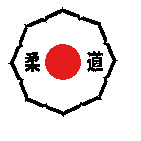|
|
The first World Championships were held in 1956 in Tokyo, with 31 contestants from 21 countries. The rapidly expanding popularity of Judo internationally justified the construction of a new Kodokan in 1958 in the Bunkyo-ku district of Tokyo, close to the former location in the Suidobashi district.
|
||
|
|
|||
|
During this time, European Judo federations had been advocating weight divisions for international Judo competitions. The Kodokan resisted these efforts as not consistent with Judo's technical theory that weight and strength were irrelevant. So, at the 1956 World Championships, and the next two World Championships held in Tokyo, and then Paris, in 1961, international competitions were traditional "open" style, with no weight, rank, or age distinctions. The first World Championship was won by Shokichi Natsui, and the second by Yasuji Sone. In Paris, however, with 57 contestants from 25 countries, Anton Geesink of Holland won. This was a big shock for Japanese Judo. With a non-Japanese as World Champion for the first time, the International Judo Federation quickly agreed to recognize weight divisions in future world championships.
|
|||
 |
At the1960 meeting of the International Olympic Committee, Judo was accepted as a demonstration sport for the 1964 Tokyo Summer Olympic Games. This was fitting, as Japan hosted the games in memory of the founder of amateur athletics in Japan, Jigoro Kano. The matches were held in the newly-constructed Nippon Budokan, and consisted of three weight divisions, light, middle and heavy, as well as an open category. The shocker again, for the Japanese, was Geesink's win in the open division over Akio Kaminaga. | ||
|
Judo was not included in the 1968 Games in Mexico City, but was finally selected as a full medal sport for the 1972 Olympic Games, the first martial art to be so recognized, although its formal debut as a permanent medal sport was overshadowed by the terrorist murders of Israeli athletes. In 1982, Judo celebrated its 100th anniversary at the Kodokan, and initiated construction greatly expanding the Kodokan and renaming it the Kodokan International Judo Center. Construction was completed in 1984. At the 1988 Seoul Olympic Games, the "open"
division was dropped from the program. The "Open" was where any
Judoka could prove his mettle. It was the original competition in Judo,
emphasizing the idea that Judo was not a weight sport, but fundamentally a
technique-oriented sport. However, as historian Donn Draeger had pointed
out as early as 1961, in circumstances where technical skills were
extremely well-developed, and competitors likewise had substantial
training and competition experience, strength and weight would play a
role, and the Judo world Kodokan International Judo Center, 1984
|
|||
 The Main Gym Kodokan |
By 1995, the World Championships, once again held in Japan, were attended by 625 competitors from100 nations, with medalists from Japan, Korea, France, Cuba, Russia, and Germany, showing that expertise in Judo was no longer limited to Japan. The Kodokan is no longer the primary authority in Judo either in Japan, where Judo is regulated by the All-Japan Judo Federation, or internationally, where the IJF is now headquartered in Seoul, Korea, under president Yong Sung Park. However, it is Kodokan rank which many practitioners still seek, and the Kodokan still enjoys a powerful technical and philosophical influence on Judo around the world. For most, this is in deference to Jigoro Kano. |
||
 |
Today, the International Judo Federation is a member of the International Olympic Committee, and although the IJF claims that Judo ranks second only to soccer as the most popular sport in the world, it is surely one of the most widely practiced sports in the world. With 175 member nations, the IJF is the largest international sport federation in the IOC. |
||
|
Judo remains one of the most popular sports, bringing the
culture and honor of Japan's fighting tradition to the world. For people
around the world, it remains an outstanding martial art, martial sport,
and cultural study. People of all cultures enjoy Judo. It is an important
gift of Japanese culture to the world, and was an important development in
sport. Most importantly, in light |
|||

 Bunkyo-ku Kodokan built in 1958.
Bunkyo-ku Kodokan built in 1958.
